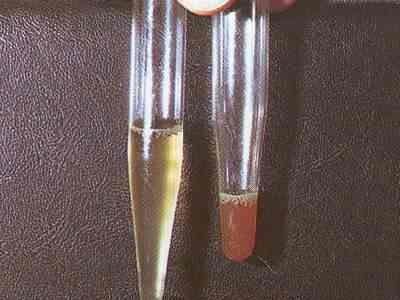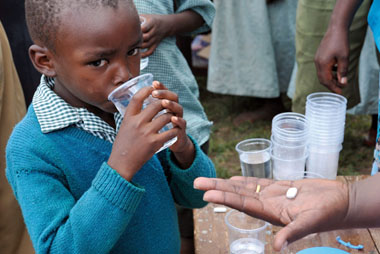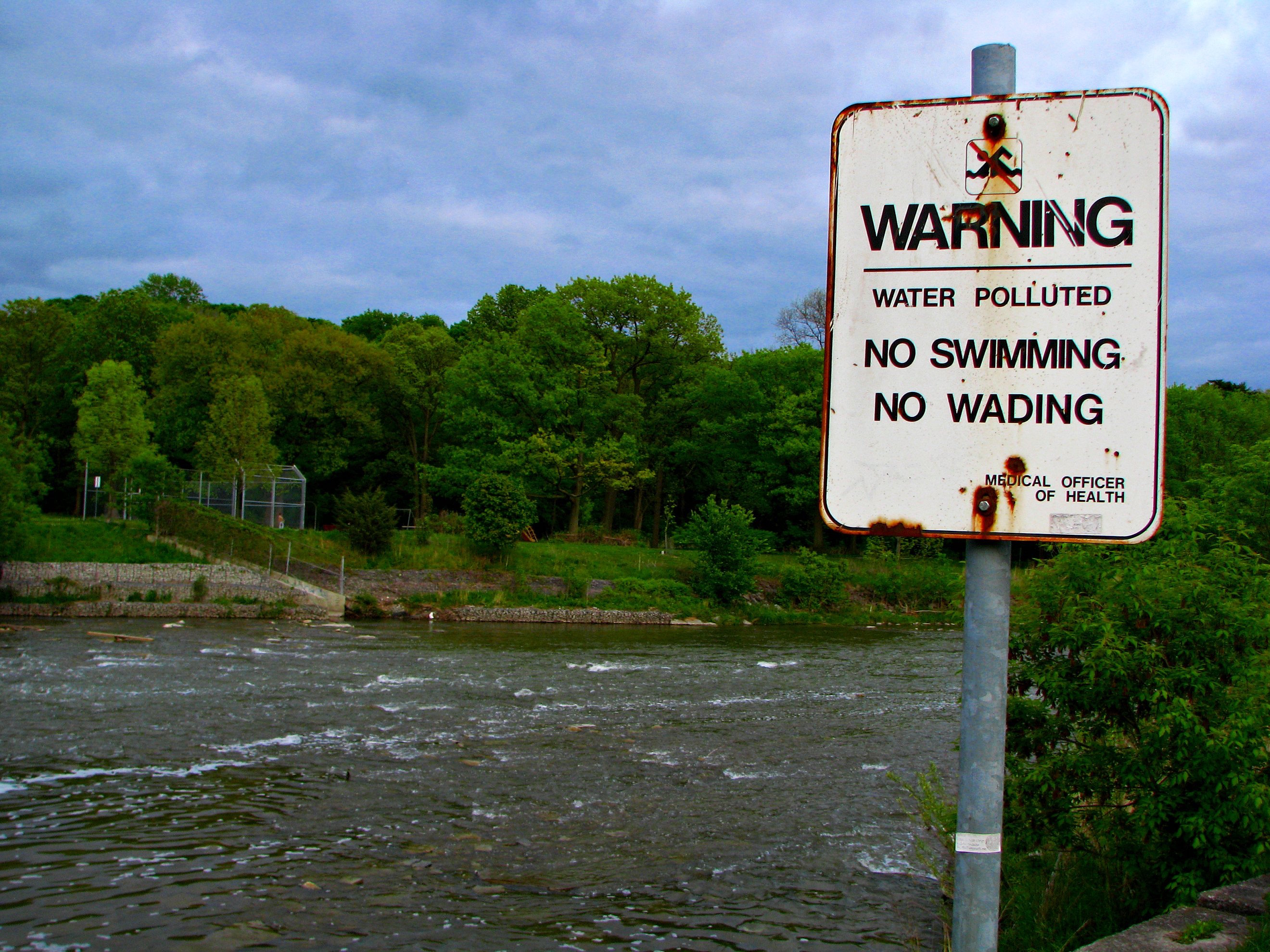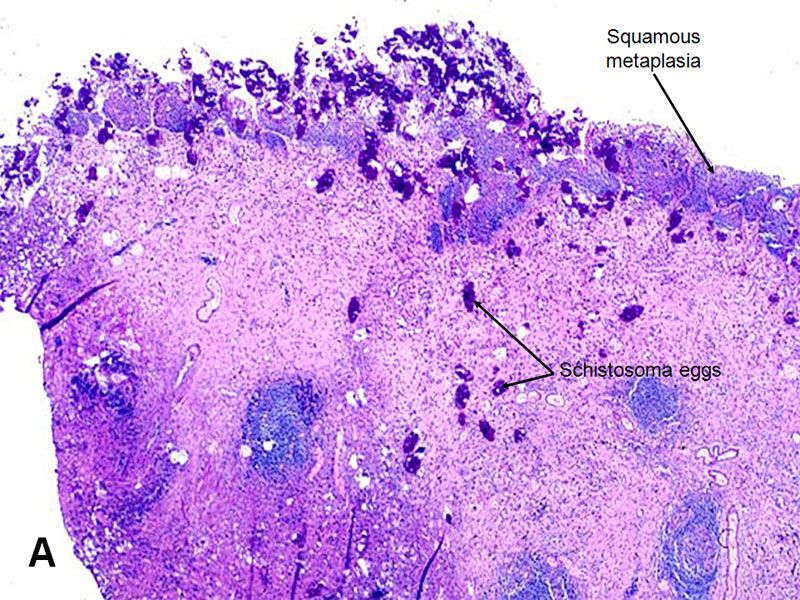Schistosomiasis, also known as bilharzia/bilharziasis and snail fever, is an infectious disease transmitted by freshwater contaminated with certain parasites (released from freshwater snails that are infected by schistosomes or blood flukes/worms). It is regarded as one of the Neglected Tropical Diseases (NTDs). After malaria, it is the second most devastating parasitic disease in the world.
This waterborne disease belongs to the group of helminth infection. It is more common among fishermen, farmers, children playing with contaminated water, and people using polluted water for day-to-day activities.
Initially, the disease affects the urinary system and intestines and gradually affects other systems as it lives in blood. The affected body part depends on parasite species. While some species affect lungs and spinal cord, some affect brain and central nervous system (CNS). It is often not fatal but is a chronic disease that can cause serious damage to the internal organs. In children, reduced growth and cognitive development may take place.
Here are the signs & symptoms, causes, complications, diagnosis, treatment and prevention of schistosomiasis.
Transmission

People may get infected by coming into direct contact contaminated freshwater where certain types of freshwater snails (carrying worms, flukes and parasites) thrive. This can occur while washing, swimming or paddling in water, drinking and eating food washed in untreated water.
Bilharzia (fluke or schistosome itself) enters the body when the larvae of fluke or parasite passes through the skin. The larvae emerge from snails, penetrate the skin when the people are inside the water and develop into adult worms living in blood.
The different types of schistosomiasis that infect the humans include:
- Schistosoma haematobium leads to urinary schistosomiasis.
- Schistosoma mansoni and schistosoma intercalatum results in intestinal schistosomiasis.
- Schistosoma japonicum and schistosoma mekongi cause Asian intestinal schistosomiasis.
When a person develops a chronic infection from any of these species, liver, spleen, brain, lungs or spine can be affected.

The infection cycle starts when freshwater gets infected with the eggs of parasite through feces and urine of infected humans. The eggs hatch inside the water and the worms reproduce inside the water snails. The tiny larvae are released in the water and they can survive for about 2 days in the water. The larvae can penetrate the human skin and enter bloodstream. Then, they travel through the blood vessels of liver and lungs and then to the veins surrounding the bladder and bowel.
After a few weeks, the worms become mature and begin producing eggs. They eventually leave the body through urine or feces. These eggs pass through the bladder walls or intestine or both. They leave the body through urine or feces. The cycle repeats.
It’s not possible to catch schistosomiasis from an infected person. The humans can only be infected through contaminated water that has the snails living in it.
Signs & Symptoms

The signs and symptoms of the disease depend on the kind of worm and stage of infection but it is mostly caused due to body’s reaction to worm’s eggs and not caused by the worms themselves.
The early signs include swimmer’s itch such as rash or itchy skin. They may appear within within few hours of infection and can last for up to a week. Nearly 3-8 weeks after infection, the person may have signs such as:
- Diarrhea
- Cough
- Fatigue
- Fever and chills
- Abdominal pain
- Muscle aches
- Weight loss
- Enlargement of the liver and spleen
Afterwards, blood may be present in the urine when the eggs pass into the urinary system.
Complications
In case the infected individual doesn’t get the treatment, the eggs stay inside the body and long-term complications may occur including:
- Bladder cancer
- Liver damage
- Eventual kidney failure
- Ulceration of the bladder
- Bleeding of the bladder
When the eggs enter the bloodstream, they can enter several major organs. And this may result in lung, heart, intestinal and CNS (central nervous system) damage. The repeated infections especially over a period of years can seriously damage these organs.
Diagnosis

If an individual comes back from a place where bilharzia is widespread and shows symptoms, they must see a doctor immediately. An infectious disease or tropical medicine specialist must be visited. It is recommended to get examined 3 months after returning even if not symptoms are seen as they may appear sometime later.
The doctor may enquire about the traveled places, duration of stay and if there was any contact with contaminated water. If any symptoms are experienced, the doctor must be informed about that. You must tell the doctor when did the symptoms first appear and if they have itchy rash or blood in the urine.
For diagnosis, a sample of urine or stool may be required to indicate whether any eggs are present. Also, a blood test may be recommended. As the worm takes nearly 40 days to mature, the blood sample may require 3 months after exposure to contaminated water for providing accurate results.
If the person experiences intestinal symptoms, a biopsy of rectum may be required even if the urine and blood tests come out negative. A bladder biopsy may be recommended.
Treatment

A medicine that is mostly effective in treatment of bilharzia is praziquantel. It can be given for a short course to clear up the infection. It can be useful even when the disease reaches an advanced stage. No significant damage or complications of the medicine have been reported so far. Also, it does not prevent infection from occurring again.
The people living in areas where schistosomiasis is prevalent should take a single oral dose of Praziquantel every year to decrease the likelihood of infection and complications.
The researchers are developing a schistosomiasis vaccine to stop the parasite's life cycle from continuing in humans.
Prevention

-
In certain places, certain projects aim elimination of the water-dwelling snails carrying the infection causing the disease. This can be done with niclosamide, acrolein and copper sulfate.
-
Try to not swim or come into contact with potentially polluted freshwater in areas where schistosomiasis is common.
-
Design irrigation schemes may make it hard for the snails to colonize the water. This might reduce the possibility of humans being exposed to disease.
-
Consider introducing crayfish to the areas where snails can help in controlling snail population.
Image Source:
1) who
2) auanet
3) britannica
4) parasite-diagnosis
5) magazine
6) azureedge

